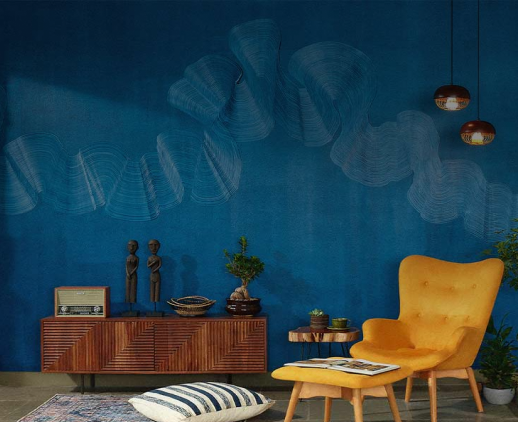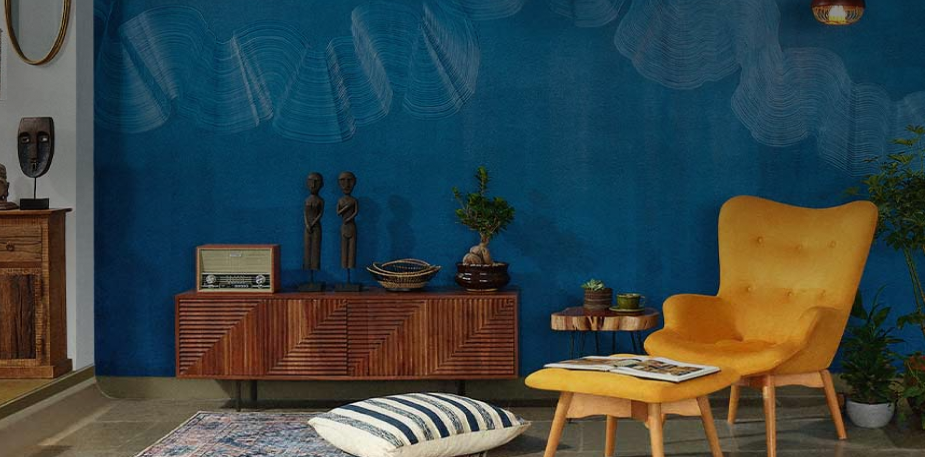Get your home interior design budget estimate
Photographer Kuber Shah’s renovation of his ancestral home is a love letter to his family's history

In an ongoing series titled Behind the Lens, we see how the country’s noteworthy interiors photographers create (and live in) their own spaces.
For anyone who’s grown up in Mumbai, there’s a sense of pride in the city’s heritage architecture and its intricate designs. For photographer Kuber Shah, upon returning to the city in 2014 after 14 years, he decided to document the attention to detail in these structures that were slowly getting lost amidst modern redevelopments. As a popular photo project that started on Instagram, Doors of Mumbai not only displays the remarkable details of these buildings, but also tells a quiet story of Shah’s love for a time being slowly forgotten. Today, he lives in his family home in Juhu, which has been lived in for generations and recently restored by him.
How would you describe your home?
The house is in a Bauhaus-style building built by a Swiss-German architect, and it was one of the first homes to be built in Juhu. It’s a three-bedroom space with the original wooden panelling, moulding and terrazzo flooring still intact. There are a lot of minute interior details in each room that are hard to find or recreate these days. Most of the building materials used were imported back then, and I always marvel at how it has withstood the harshest seasons without rusting, breaking or falling apart over the decades.

Shah retained the original terrazzo tiles by Bharat Floorings. The 40-year-old sofa has been reupholstered in leather, and a series of photographs from Doors of Mumbai hang on the wall above.
What has the house been like through the generations?
With four generations having lived in this home—from my grandparents to my son—it now has layers and stories of each family member in it. The home was very thoughtfully designed when my grandparents moved in. However, with neglect over the years, there was a lot of repair work that piled up. We also realised the terrace had never been waterproofed, which led to some furniture getting damaged over time. My grandfather had an elaborate console with a turntable and bar, and my grandmother couldn’t live without her swing. My father was always interested in bonsai, so we had miniature plant corners in every space. Today, there’s old furniture and wooden cupboards from our ancestral home juxtaposed with my son’s paintings hung as art on the walls.
What was your vision for the home when you wanted to renovate it?
My biggest priority was to retain as much of the original detailing as I could, especially with the windows and pinstripe moulding on the walls. I also wanted to bring in quality wooden furniture for a mid-century aesthetic. And, for my son to run around, I decided to create as much clear open space as I could—you won’t see too many artefacts lying around now.

A bishop and two pawns from an African-styled chess set from Kenya.

A green Malaysian heirloom vase rests on a cabinet reclaimed from a larger piece of furniture in the house.

An antique chess set with oak and mahogany inlay work showcases German war figurines.
What was your renovation process like?
First, we began with waterproofing the entire home. Then, we replaced a lot of furniture with freestanding pieces so it can be moved around as our living habits evolve. The entire renovation process was not easy-for three months our windows were boarded up and we had to deal with a stay order along the way. But, in a span of a year, we managed to renovate the entire home, redo the terrace, waterproof every room and baby-proof each space.
Did you face any challenges while renovating the home?
The biggest challenge we didn't consider was disposing of construction waste while renovating the home. This is something that's always overlooked and can stall your work temporarily. Also, my father and I had to physically be present throughout the process to make sure everything was done correctly. I'd advise everyone to always have the correct paperwork before beginning construction at home to avoid any legal problems along the way.

A serving window on the wall opens into the kitchen. The teak-with-brass-inlay doors in the background have been given a laminate polish to withstand the weather over time.
What are your tips for anyone looking to renovate a heritage home passed down for generations?
As a starting point, retain the original look and detailing as much as you can. If there’s something you’d like to add, find a way to build around (or blend into) what already exists. The first room you should begin renovating is always the washroom—you’ll never know the scale of repairs required until you tackle this space.
How did the Doors of Mumbai project begin?
This project started in 2014 and was unknowingly my introduction to architecture and interior design. It helped me discover my potential and love for photography. In the 14 years I lived away from home, each time I’d return for a visit, I’d notice old buildings, landmarks and iconic structures disappearing rapidly. I started feeling a responsibility to preserve them in some way. While I initially documented doors, façades and entry points to buildings, the project evolved into showcasing the rich Gothic, Victorian and art deco styles of design we have in our city. With each image, I tried to separate a building from its surroundings to singularly capture how it seemed to have its own identity and personality.
Of all the spaces you’ve shot, which one is most symbolic to you?
The Horta Museum in Brussels, Belgium, built by Victor Horta, who was one of the key founders of the Art Nouveau style of architecture. It is his former house and workshop, which now stands as an homage to the furniture, utensils and art objects designed by him. The most memorable moment for me was getting to discover every fine detail of craftsmanship in his work. There’s a lot of attention to detail even in the smallest pieces, which is what I’m always trying to capture in my photography over the years.
What are the styles you’ve learnt through your work, and which ones work best in an Indian home?
The most important thing to consider when building a home is finding the right way to utilise space and natural light and play around with it. Not only does it instantly open up a room but also adds character—something you don’t often see in houses being built today. If I had to build a house from scratch, it would be a modern brutalist structure with slats of sunlight streaming into every room. I’d decorate it with standalone pieces of furniture. I’ve been eyeing the Louis Poulsen Ph 5 Mini pendant and Thonet's Chair No. 14 lately.
After shooting so many homes over the years, what does the idea of a perfect home mean to you?
A home should bring an entire family together. At the same time, it should also have personalised private corners for everyone to have their own privacy, space and creature comforts to inspire and improve everything that they do. And, of course, lots of parking!

Get Started with your interior design journey with us!
Speak to our design professionals
What’s the status of your home possession?
What’s the condition of your home/space?
Will you be living in your space during the renovation?
 Previous Question
Previous Question
Is your interior design budget over 4 lakhs?
 Previous Question
Previous Question
Book next available appointment slots with our experts!
Please Select Date and Day
 Previous Question
Previous Question

Something went wrong!
We were unable to receive your details. Please try submitting them again.

Appointment Scheduled!
Thank you for giving an opportunity to Asian Paints Beautiful Homes Service! Our Customer Experience Specialist will get in touch with you soon.
Appointment Date & time
Thank You!
Our team will contact you for further details.
What’s the status of your home possession?
What’s the condition of your home/space?
Will you be living in your space during the renovation ?
 Previous Question
Previous Question
Is your interior design budget over 4 lakhs?
 Previous Question
Previous Question
Book next available appointment slots with our experts!
DEC 2023
Please Select Date and Day
 Previous Question
Previous Question

Something went wrong!
We were unable to receive your details. Please try submitting them again.

Appointment Scheduled!
Thank you for giving an opportunity to Asian Paints Beautiful Homes Service! Our Customer Experience Specialist will get in touch with you soon.
Appointment Date & time
17 Oct 23, 03.00PM - 04.00PM











































